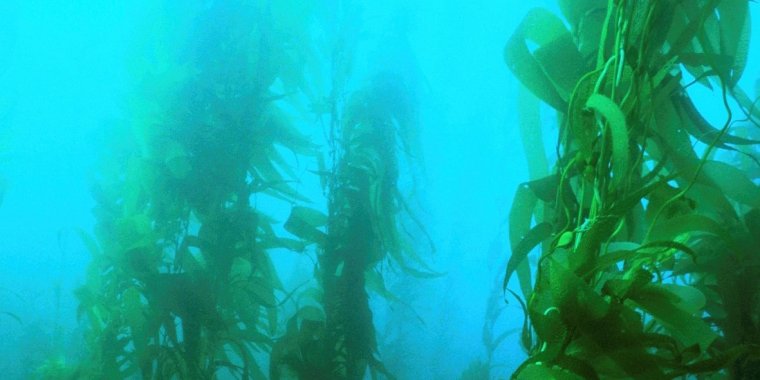| Health / Health News |
Giant kelp switches diet when key nutrient becomes scarce
One of the fastest-growing organisms on Earth, giant kelp can grow 2 feet a day and reach almost 150 feet in length -- in one growing season.

A forest of giant kelp off the coast of Southern California. Image credit: Ron McPeak/National Science Foundation
Growth spurts of this large seaweed are fueled by a diet of dissolved nitrogen. One of the main forms of nitrogen is nitrate, and although nitrate is scarce in the summer and fall, giant kelp continues to grow year-round.
Nitrate and another form of nitrogen, ammonium, are the only sources kelp had been known to use.
The scientists discovered that kelp also uses another form of dissolved nitrogen, urea, found in abundance in coastal upwelling zones such as the Santa Barbara Channel.
Urea is a common fertilizer, so it's present in runoff. And there are natural sources as well.
When the scientists measured urea in the ocean, they found it to be consistently present year-round, and concentrations tended to be higher than those of ammonium and nitrate in the summer.
This report provides an explanation for how giant kelp in Southern California is able to persist and grow when nitrate concentrations in coastal waters are extremely low.
It turned out that kelp consistently showed no preference, and used urea at equal rates as ammonium.
However, calculating a rate of use for these different compounds provided only half the answer.
Scientists know that urea has a persistent presence in the coastal ocean, not only off the coast of California but in coastal oceans globally. The finding helps explain seaweed growth in many places.
The research also helps answer another question: why phytoplankton growth declined during the 2013-2016 El Niño, while giant kelp flourished. Less nitrogen available in the warmer surface water diminished phytoplankton growth, while giant kelp growth was steady, thanks to urea as a nutrient source. Phytoplankton don't make use of urea. (National Science Foundation)
YOU MAY ALSO LIKE



